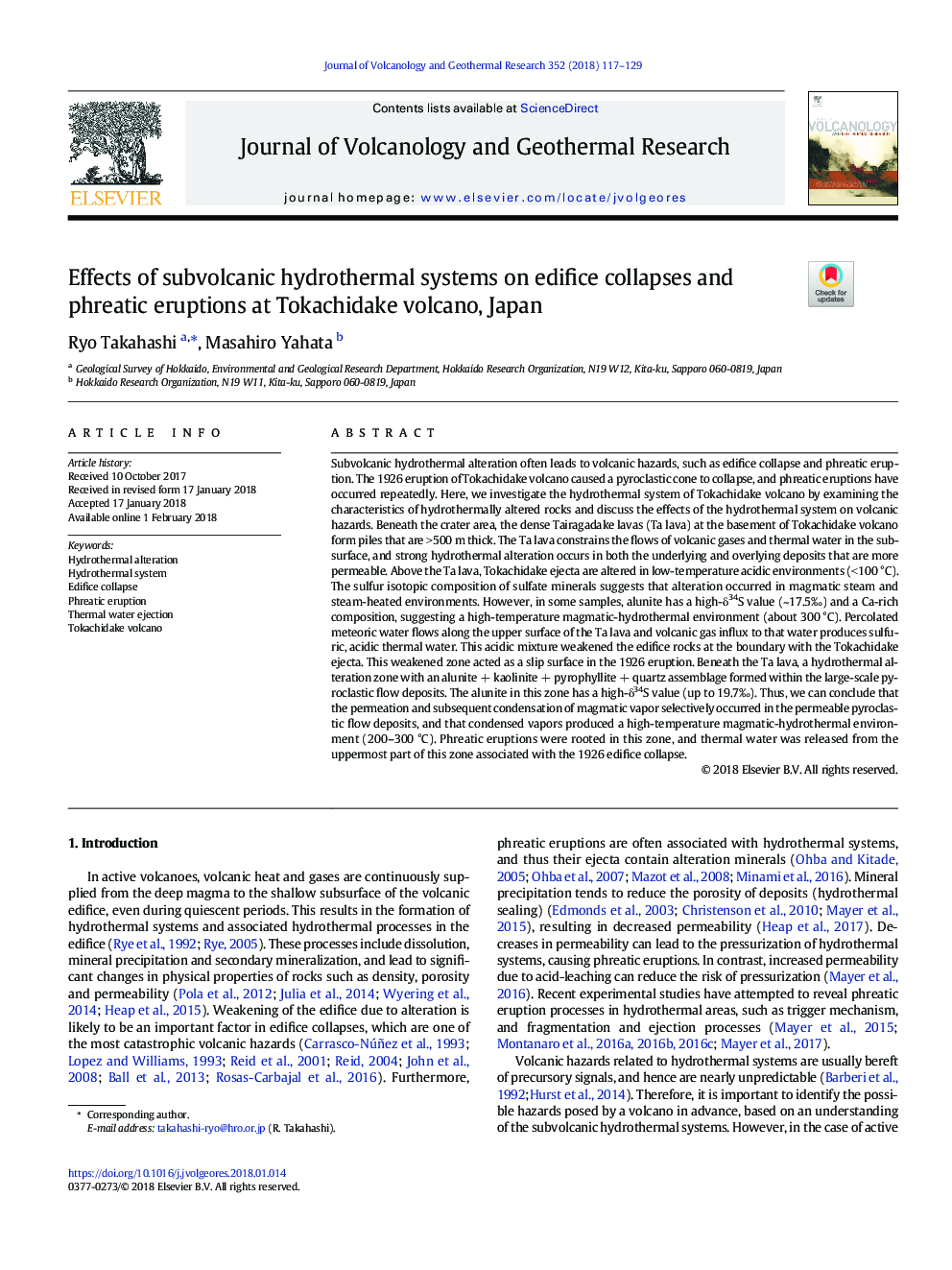| کد مقاله | کد نشریه | سال انتشار | مقاله انگلیسی | نسخه تمام متن |
|---|---|---|---|---|
| 8911394 | 1638271 | 2018 | 13 صفحه PDF | دانلود رایگان |
عنوان انگلیسی مقاله ISI
Effects of subvolcanic hydrothermal systems on edifice collapses and phreatic eruptions at Tokachidake volcano, Japan
دانلود مقاله + سفارش ترجمه
دانلود مقاله ISI انگلیسی
رایگان برای ایرانیان
کلمات کلیدی
موضوعات مرتبط
مهندسی و علوم پایه
علوم زمین و سیارات
ژئوشیمی و پترولوژی
پیش نمایش صفحه اول مقاله

چکیده انگلیسی
Subvolcanic hydrothermal alteration often leads to volcanic hazards, such as edifice collapse and phreatic eruption. The 1926 eruption of Tokachidake volcano caused a pyroclastic cone to collapse, and phreatic eruptions have occurred repeatedly. Here, we investigate the hydrothermal system of Tokachidake volcano by examining the characteristics of hydrothermally altered rocks and discuss the effects of the hydrothermal system on volcanic hazards. Beneath the crater area, the dense Tairagadake lavas (Ta lava) at the basement of Tokachidake volcano form piles that are >500â¯m thick. The Ta lava constrains the flows of volcanic gases and thermal water in the subsurface, and strong hydrothermal alteration occurs in both the underlying and overlying deposits that are more permeable. Above the Ta lava, Tokachidake ejecta are altered in low-temperature acidic environments (<100â¯Â°C). The sulfur isotopic composition of sulfate minerals suggests that alteration occurred in magmatic steam and steam-heated environments. However, in some samples, alunite has a high-δ34S value (~17.5â°) and a Ca-rich composition, suggesting a high-temperature magmatic-hydrothermal environment (about 300â¯Â°C). Percolated meteoric water flows along the upper surface of the Ta lava and volcanic gas influx to that water produces sulfuric, acidic thermal water. This acidic mixture weakened the edifice rocks at the boundary with the Tokachidake ejecta. This weakened zone acted as a slip surface in the 1926 eruption. Beneath the Ta lava, a hydrothermal alteration zone with an aluniteâ¯+â¯kaoliniteâ¯+â¯pyrophylliteâ¯+â¯quartz assemblage formed within the large-scale pyroclastic flow deposits. The alunite in this zone has a high-δ34S value (up to 19.7â°). Thus, we can conclude that the permeation and subsequent condensation of magmatic vapor selectively occurred in the permeable pyroclastic flow deposits, and that condensed vapors produced a high-temperature magmatic-hydrothermal environment (200-300â¯Â°C). Phreatic eruptions were rooted in this zone, and thermal water was released from the uppermost part of this zone associated with the 1926 edifice collapse.
ناشر
Database: Elsevier - ScienceDirect (ساینس دایرکت)
Journal: Journal of Volcanology and Geothermal Research - Volume 352, 15 February 2018, Pages 117-129
Journal: Journal of Volcanology and Geothermal Research - Volume 352, 15 February 2018, Pages 117-129
نویسندگان
Ryo Takahashi, Masahiro Yahata,